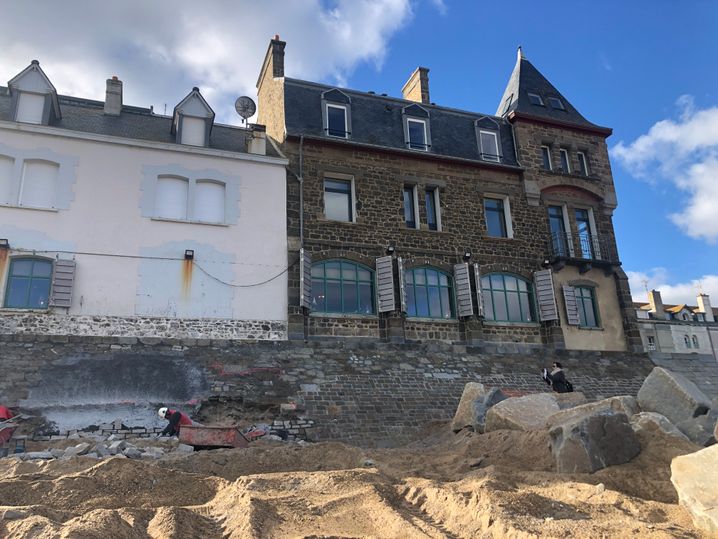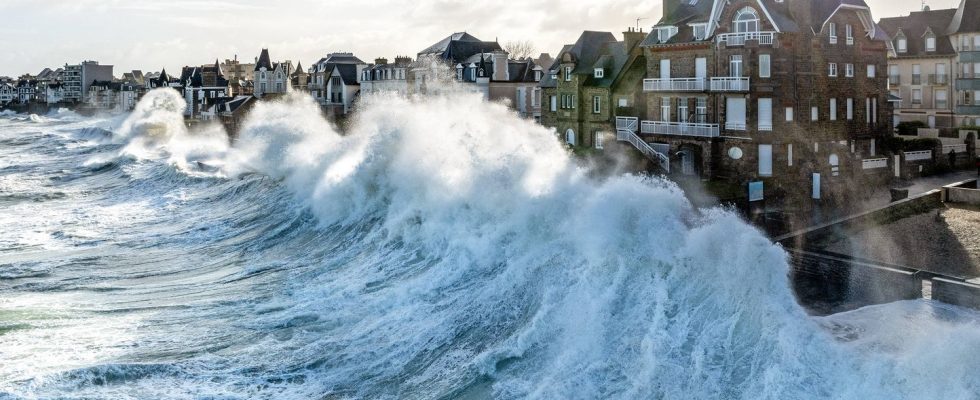With each approaching storm, the same ceremony is repeated. Sheltered from the rain, they prepare their boots and their raincoats with the sole idea of getting as close as possible to the enormous waves that crash against the Saint-Malo embankment. At the risk of their lives and those of people who could come to help them. In the corsair city, big storms have always caused amazement among the locals, half amused and half frightened to see the sea being thrown into the air in contact with the coastline.
The appearance of mobile phones and social networks has, however, increased dangerous behavior, with many people not hesitating to get as close as possible to the embankment, even though it is submerged under water. With the sole aim of capturing the moment on video and impressing the gallery. “Some people put their children there, just for a photo. I even saw a stroller lying there once,” says a disillusioned city agent, pointing to the access to the large Sillon beach. The municipal police keep watch but do not issue fines. “Some people asked me to do it,” admits Mayor Gilles Lurton. “It’s difficult for me, we’re touching on freedom. But sometimes you probably need to show more authority. »
The dike is monitored very closely
The phenomenon may be more and more significant, but it is not the one that worries the elected Republican the most. “We prefer to concentrate on the state of our dike,” says Gilles Lurton, with a smile. This Thursday, he spoke with the hat of the president of the agglomeration to highlight the repair work on the 2.8 kilometer long dike which supports and protects the Sillon brewery. Located on the seafront, the old building is regularly hit by swells during high tides. “We manage to stay open. On the other hand, we close the shutters to avoid the projection of pebbles or pieces of wood,” testifies a member of the staff of the panoramic restaurant.
When storm Karlotta passed through in February, the establishment had to be evacuated and remained closed for two and a half days. “The swell was particularly violent. But as long as the tide was high, we didn’t notice anything, it was when the sea receded that we understood,” says David Poncelet, head of aquatic environment management and flood prevention (Gemapi ). On the sand of Sillon beach, the agents discovered the cobblestones, torn away by the force of the sea.
A company urgently intervened to inject concrete wherever the stone had been removed. “If we had left it like that, we might have said goodbye to the buildings,” admits manager Gemapi. This dressing is being removed by Eiffage employees, who are gradually replacing it with French granite paving stones. “We could use cast concrete, it would be more solid. But I’m not sure that the architect of Bâtiments de France would agree,” slips David Poncelet.
In the corsair city, the balance between heritage preservation and coastal protection is not always easy to find. Here, some 25,000 inhabitants live below sea level. And nearly 130,000 in total are potentially threatened, especially as global warming is expected to increase the violence of the phenomena. Here, opinions are divided on the evolution of storm intensity and erosion. “I don’t know if they happen more often. What is certain is that we had a huge storm in the middle of August last year and that is unusual. Especially since I can tell you that it hit well! All the tourists were there watching,” remembers the manager of the Sillon brewery.
At the foot of its restaurant, the community will spend 170,000 euros in two years to repair everything. The city will also have to spend a million euros to rebuild the Rochebonne slipway, whose cobblestones were also torn up by the sea. How long will the communities agree to pay to feed the ocean with granite that Did they pay a blind? “It certainly worries us. We saw benches and lampposts being torn down. Even a breakwater. Can you imagine if he ran into someone? There is a real danger for the population,” recalls Gilles Lurton.
Not sure I’ll be there “in ten or twenty years”
Is there also a risk of seeing the buildings end up in the sea? “Sea levels are rising faster than forecast, so yes, the risk is there. For now, we are able to make repairs,” says the mayor. “I’m not sure the building will still be there in ten or twenty years. I hope so, but I’m not sure,” says the manager of the Sillon brewery. On the other side of the beach, significant cracks have appeared at Caravelle, another emblematic address of the city. “We can’t do anything other than monitor,” acknowledges David Poncelet.

Faced with the power of the elements, men have no thousand other solutions than to repair, consolidate and hope. In Saint-Malo, the use of breakwaters has long been widespread. A tired part has just been replaced. But this option is not possible everywhere, in particular because the sand is too thin.

